4 chance worksheets linked to the Australian Curriculum.
This teaching resource could be used in a variety of ways when teaching chance. Some suggestions include:
- pre- and post-testing
- independent classwork
- revision
- homework.
This teaching resource pack includes worksheets addressing the following concepts:
- probability outcomes using fractions
- probability range 0-1
Answer sheets are also provided.
Download options include:
- the year level displayed at the top of the sheet
- no year level displayed at the top of the sheet to use for differentiation.

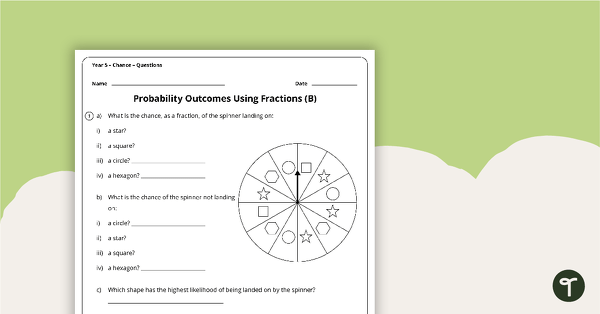
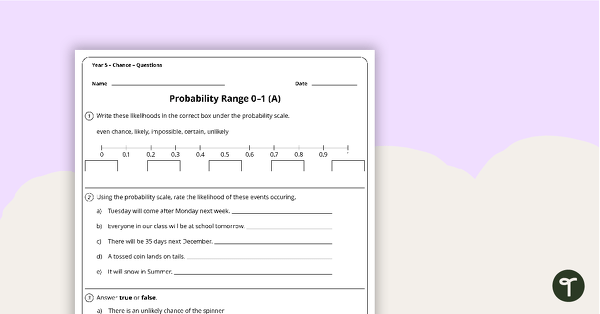
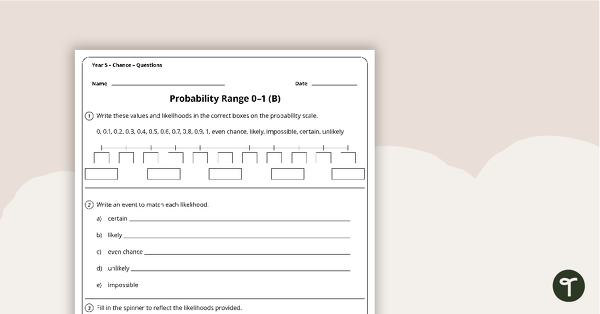

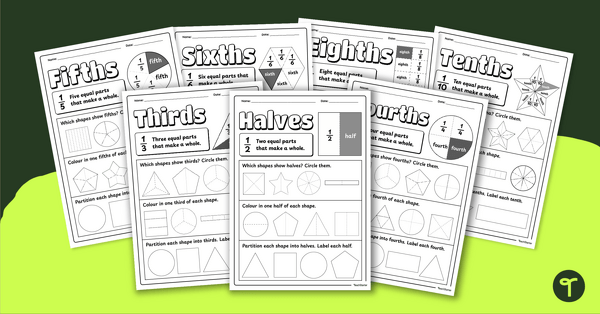
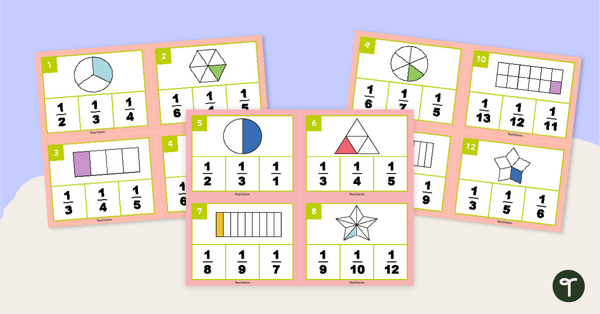
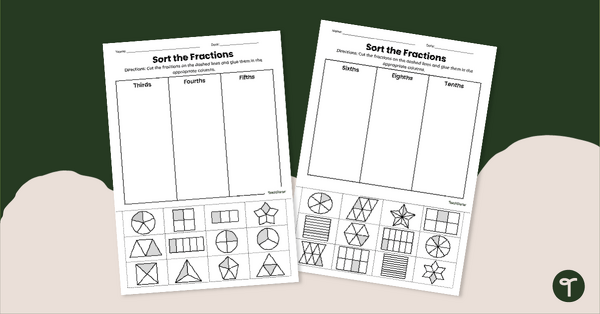
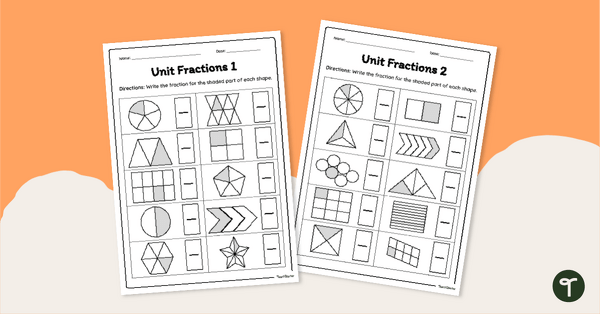
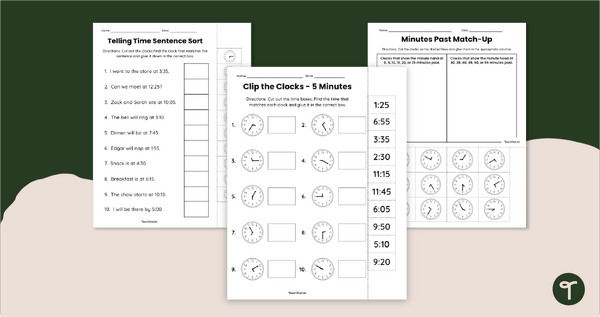
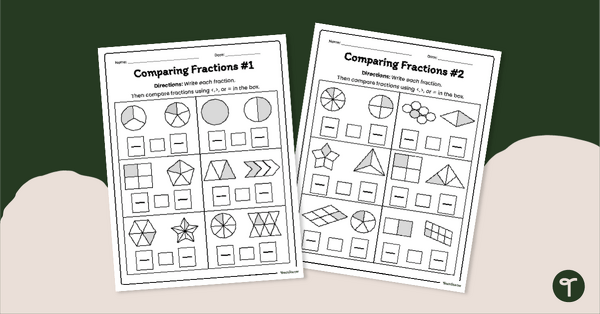
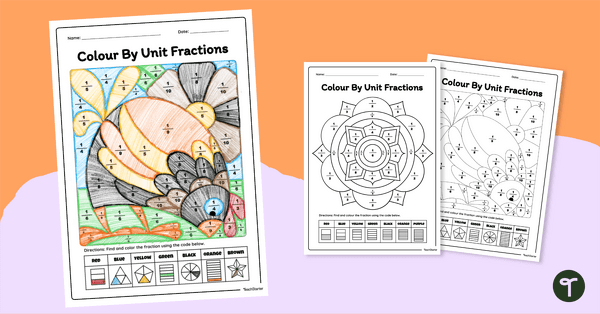
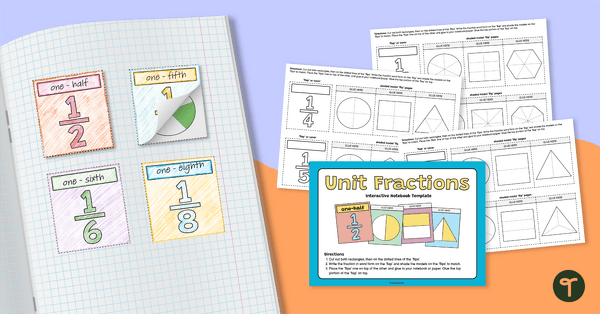
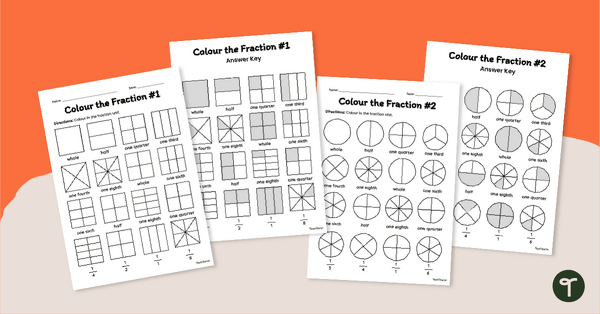
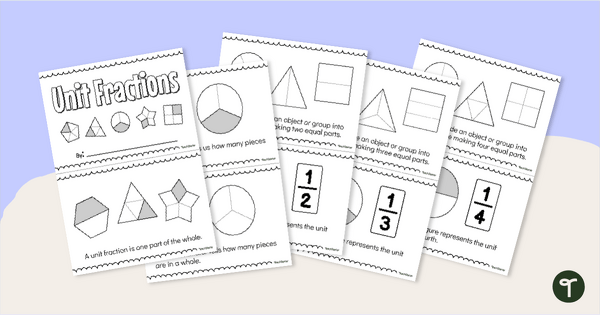
Hi Miss Jackman. My apologies, we had fixed the wording and then an old version was accidentally re-uploaded, so it wasn't just your tired teacher brain! My apologies for the confusion. The correct file has been re-uploaded with clearer wording.
Just thought I should point out, in the 'Probability Using Fractions A' activity, question one is what is the chance of the spinner landing on: i) a b or a B. Some students may be confused by the initial use of 'a' and think that it refers to the 'a' on the spinner.
I think this edit is still confusing to read (as I marked it with my teacher tired brain). I read it to mean students were answering if the spinner would land on an a, b or B. Perhaps if the capital letter B was offered first, i.e i) a B or a b?
Hi Tristram, That's a good point! I can see what you mean. I have adjusted the wording to reflect your feedback. Thanks for bringing that to our attention. Kind regards Jill